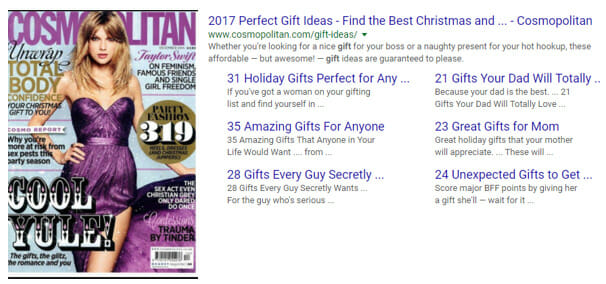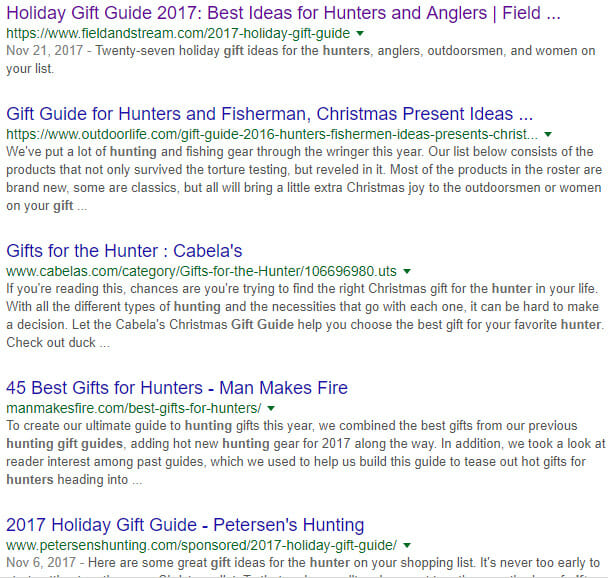Submit Your Book to Holiday Gift Guides

Whether you write fiction or nonfiction, your book will make a welcome gift.
But how can people buy it for friends and loved ones if they don’t know it exists? They read about it in a holiday gift guide.
Gift guides are published by:
- newspapers
- magazines
- newsletters
- bloggers
- websites
- even radio and TV shows
9 Reasons You Should Target Gift Guides
Gift guides are powerful publicity tools. Here’s why:- Many gift guides feature fiction and nonfiction books that appeal to
the media outlet’s audience. Your book must be a perfect fit.
- Books written for narrow niches are ideal for gift guides. Have you
written a book on how to start an accounting business? Magazines about
small business and accounting might love to feature your book.
- Unlike most other publicity you’re seeking, you don’t need a “hook”
or “angle” or a creative pitch. You only need a compatible book, a press
release and a photo of the cover.
- Print and broadcast media aren’t the only ones with gift guides. Bloggers, podcasters and niche websites offer them too.
- Gift guides bring in a lot of ad revenue for those who publish them.
But in most cases, you don’t have to buy an ad to get your book
featured.
- If you’re trying to get into a Christmas gift guide published by a
major magazine, and you miss the early deadline of June or July, you
still might be able to get into the online version of the guide. The
magazine might update its gift guide for last-minute shoppers and accept
your information a week or two before Christmas.
- Don’t submit only books. Spin-off products like wall calendars,
games, toys and learning guides that tie into your book also might make
perfect gifts.
- Gift guide editors often edit other sections of a newspaper or
magazine. You can use their contact information to stay in touch with
them and suggest other story ideas, even if they don’t include you in
their gift guides.
- Some publications, like Cosmopolitan magazine, for instance have multiple gift guides throughout the year.

Major and Minor Holidays
Don’t think just Christmas. You’ll find thousands of gift guides that are tied to a wide variety of major and minor holidays and special times of the year.Thanksgiving
These guides feature products that would make great thank you gifts for the host or hostess making the turkey dinner.Valentine’s Day
Romance novels, of course. But look beyond the obvious. What about books written for singles who aren’t in a relationship?Graduation Day
Will your book be perfect for high school or college graduates? What do they need to know before moving into the next stage of their lives? These sections would welcome books about job-hunting, life skills, reducing stress and even relationships.Global Running Day
Niche publications and websites for runners might have gift guides leading up to this day. Other gift guides for outdoors lovers are devoted to hunting, fishing, hiking, boating, etc.Father’s Day
Dad might love books for his man cave–perfect if you’ve written a book about sports, home improvement projects, outdoor grilling, or even a spine-chilling mystery novel.Mother’s Day
What’s mom’s hobby? Can you tie it into your book? What problem is she struggling with that your how-to book will help her solve? What chick lit might she like?How to Find Gift Guides
If you can afford to pay for a database of gift guides, I recommend The Gift List, published by Gift List Media. They call editors, producers, bloggers and writers every season to find out their specific feature details, deadlines, lead times and contact preferences for the current year. You also get the correct names and contact information for each product category, plus tips on how to pitch them.You can log into your account to find the latest updates on pitching opportunities many months ahead, as well as late deadlines for gift guides that are created at the last minute. You can also track who and when you’ve pitched and schedule your follow-up.
If you can’t afford a gift guide, the next best option is to search online for the type of gift guide you need. Let’s say you’ve written a book about hunting. Google “gift guides for hunters” and you’ll find at least nine gift guides on the first page of results.

Click on each one, see what kinds of gifts they include, and try to find contact information for the person responsible for compiling the guide. Look for the “Contact Us” button.
Keep a spreadsheet with your best pitching opportunities and contact information.
How to Submit Your Book
Pitching preferences differ from one gift guide to the next, but it might be difficult to learn exactly who wants what. If you find guidelines, follow them to the letter.If you can’t find them, do this:
- First, try to learn whether a specific gift guide features books. If
you don’t know, you can take a chance and submit your information
anyway.
- Next, write a press release about the book that explains what it’s about, the genre, price and where it’s available. My Quick & Easy Media Kit Templates include sample press releases for fiction and nonfiction. Do not send the entire media kit.
- Get a high-resolution photo of the book cover.
- Email both the PDF press release and a JPG image of the cover to the media outlet. Do not send your book unsolicited. This can get expensive, and most editors won’t read it. Send a copy only if asked to do so. Find out if you can send the digital file.
What to do If Your Book is Featured
- If you hit a home run and your book is included in a gift guide, let
your friends and followers know. Share it on social media and link to
the gift guide.
- Include a one-liner “As seen in…” in your email signature. Write a
short blurb for your email newsletter. Write a blog post explaining what
you did to get into the guide.
- You can also use the logo for the media outlet in your media kit and on your website. Can’t you just see a collection of logos? It could be what pushes a potential reader to buy your book, even if they haven’t seen the gift guide.
I hope you find ideas to help you promote your book.

